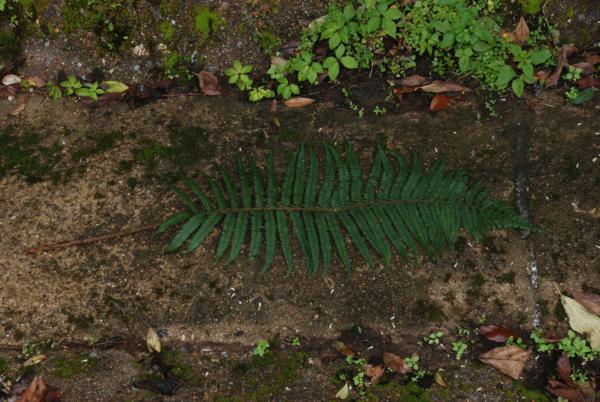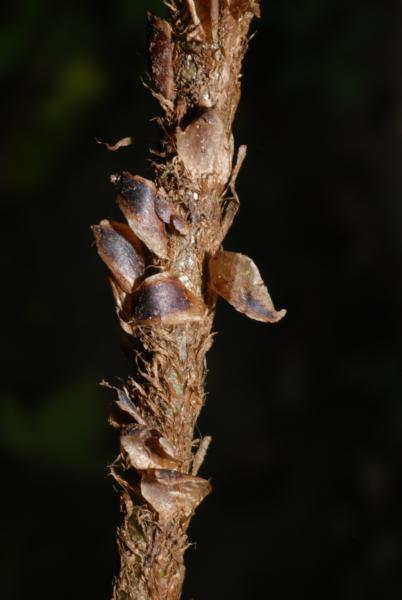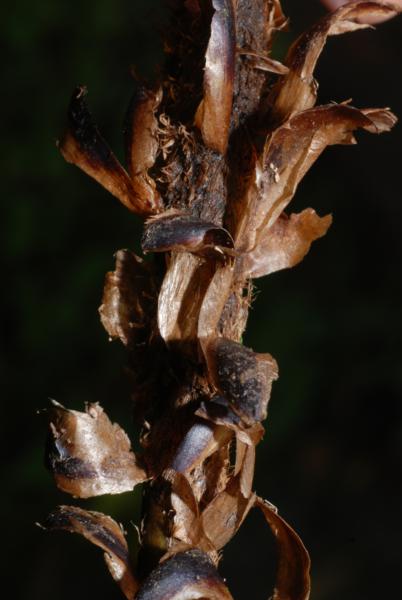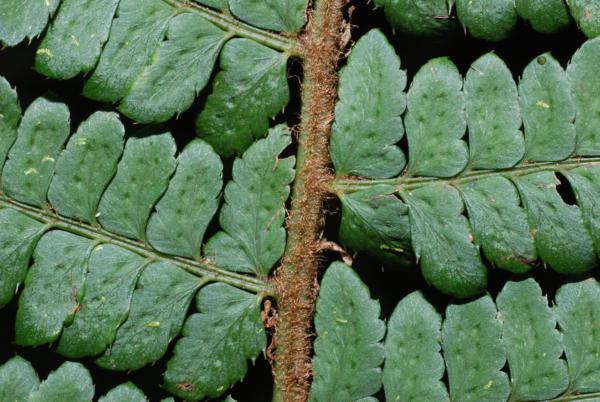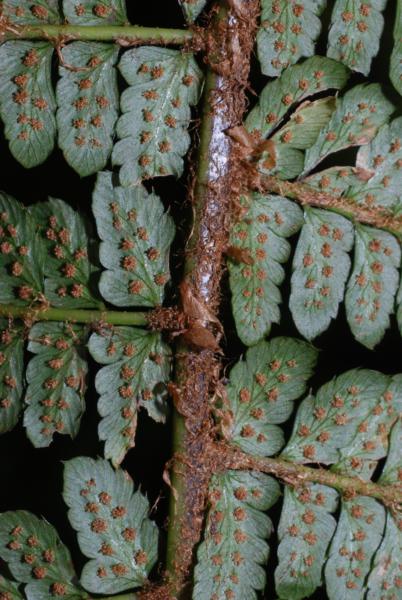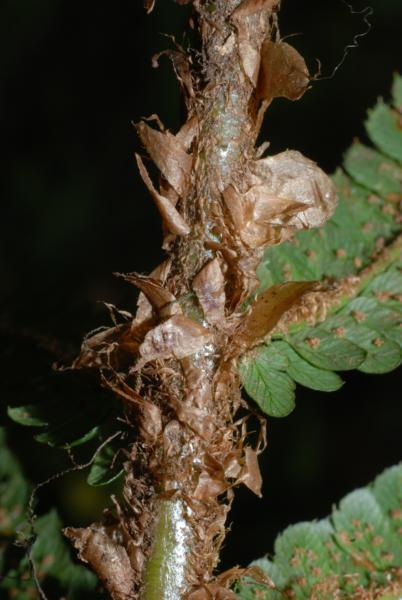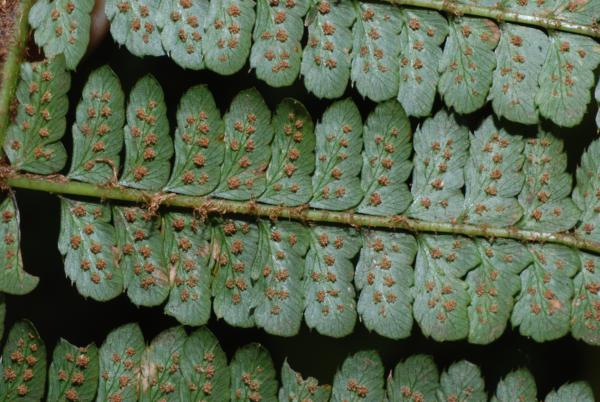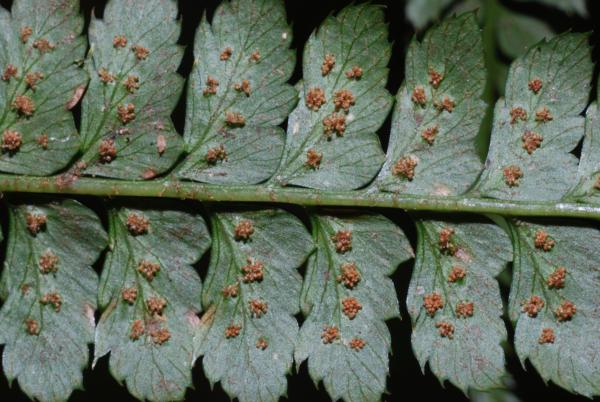
Polystichum semifertile (C.B.Clarke) Ching
Family
Dryopteridaceae
Nomenclature
Polystichum semifertile (C.B.Clarke) Ching, Lingnan Sci. J. 15: 398. 1936; Tardieu & C.Chr., Fl. Indo-Chine 7(2): 341. 1941; Tagawa & K.Iwats., SouthE. Asian Stud. 5: 94. 1967; Tagawa & K.Iwats., Fl. Thailand 3: 338, f. 29.6 & 29.7. 1988; Boonkerd & Pollawatn, Pterid. Thailand: 209. 2000. – Aspidium aculeatum var. semifertile C.B.Clarke, Trans. Linn. Soc. London, Bot. 1: 509. 1880. – Polystichum aculeatum var. semifertile (C.B.Clarke) Bedd., Handb. Ferns Brit. India: 209. 1883.
Description
Rhizome massive, erect; scales oblong-subtriangular, up to 25 by 8 mm, bicoloured, central portion shining castaneous brown to nearly black, the edges light brown, ferrugineous. Stipes 40–60 cm long; scales at base of two kinds, one like those on rhizome, the other smaller, linear, up to 8 mm long, toothed at margin, those on upper part narrower, linear, 1 cm or more long, dark brown, toothed at margin, ferrugineous. Laminae oblong, acuminate at apex, truncate at base, 50–70 by 25–38 cm; rachis densely covered with downy linear scales; pinnae about 20 pairs, the lowest pinnae hardly reduced, patent, opposite, up to 15 by 2.5 cm, the middle ones patent or slightly ascending, alternate, narrowly lanceolate, broadly cuneate at base, gradually long-acuminate at apex, up to 18 by 2.5–3.5 cm in sterile and 1.5 cm in fertile ones; pinna-rachis densely scaly, grooved above; pinnules falcate, acute at apex, distinctly auricled at acroscopic and dimidiate at basiscopic bases, sessile, up to 17 by 7 mm in sterile and 12 by 5 mm in fertile ones, with shallowly crenate lobes ending in distinct awns; coriaceous, green, glabrous on laminar surface. Sori scattered on basal pinnae, from near rachis towards posterior portion, in one row, medial to costular, fertile pinnules smaller than sterile ones; indusia fugacious at maturity, dark in central portion, up to 1 mm.
Distribution in Thailand
NORTHERN: Mae Hong Son, Chiang Mai.
Wider Distribution
SW China (Yunnan), Vietnam.
Ecology
On humus-rich floor of dense, mossy evergreen forests at 1800–2500 m alt.; confined to the highest northern mountains.
Proposed IUCN Conservation Assessment
Least Concern (LC). This species is widespread and not under any known threat.
Voucher specimens - Thailand
Middleton et al. 4908, Chiang Mai, Doi Inthanon National Park (E); Middleton et al. 4921, Chiang Mai, Doi Inthanon National Park (E).
Frond
Stipe
Scales on stipe
Rachis and upper surface of pinnae
Rachis and lower surface of pinnae
Scales on rachis
Lower surface of lamina
Sori
Site hosted by the Royal Botanic Garden Edinburgh. Content managed by Stuart Lindsay, Gardens by the Bay, Singapore and David Middleton, Singapore Botanic Gardens. Last updated 24 January 2012
